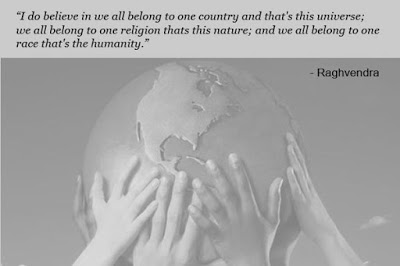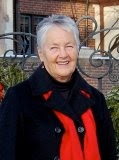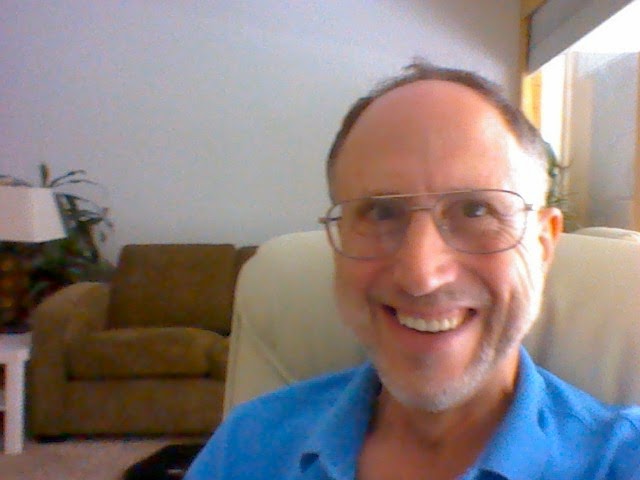In 1950 when I was 15 years old our family moved from New
Jersey to Louisiana.
Jersey to Louisiana.
I have often said a comparable change would be moving from
Earth to the moon.
Earth to the moon.
In this case, however, the moon would have been populated
with humanoids who had their own culture and language–very much different from
anything I had ever encountered in my young life. However, I was young and I
had much to learn and experience.
with humanoids who had their own culture and language–very much different from
anything I had ever encountered in my young life. However, I was young and I
had much to learn and experience.
The first difference that I noticed in my new home was the
blatant discrimination and racist practices carried out against people of
color. I’m not so sure the same thing was not going on in New Jersey. I suspect
I just didn’t see it. It was hidden. In the deep South, it couldn’t be hidden
because of the large population of African Americans. Almost every household in my new hometown had
at least one black person working for them. These family servants had to have
their own toilet facilities usually outside or in the garage, their own private
glass from which to get a drink of water (never would a white person want to
drink from the same glass!) We all know about the public drinking fountains.
blatant discrimination and racist practices carried out against people of
color. I’m not so sure the same thing was not going on in New Jersey. I suspect
I just didn’t see it. It was hidden. In the deep South, it couldn’t be hidden
because of the large population of African Americans. Almost every household in my new hometown had
at least one black person working for them. These family servants had to have
their own toilet facilities usually outside or in the garage, their own private
glass from which to get a drink of water (never would a white person want to
drink from the same glass!) We all know about the public drinking fountains.
Of course, the schools were segregated as was everything
else. I left the South to attend college in New York State in 1953 never to
return except for visits with my parents.
else. I left the South to attend college in New York State in 1953 never to
return except for visits with my parents.
After federal legislation made segregation illegal in the
1960’s nothing changed much in Louisiana. These southern people are slow moving
indeed. It was not until the late 1970’s
that they finally were forced to allow black people to use public facilities
such as restaurants. On one occasion when I returned to Hammond for a visit, my
high school friend suggested we go out to dinner. She assured me they had
solved the problem of integration by making the city restaurants into private
clubs. Most whites belonged to all the clubs and there were many of them. We
would have to take our own liquor since it was no longer a public place. The
private clubs could or would not get licenses to sell liquor.
1960’s nothing changed much in Louisiana. These southern people are slow moving
indeed. It was not until the late 1970’s
that they finally were forced to allow black people to use public facilities
such as restaurants. On one occasion when I returned to Hammond for a visit, my
high school friend suggested we go out to dinner. She assured me they had
solved the problem of integration by making the city restaurants into private
clubs. Most whites belonged to all the clubs and there were many of them. We
would have to take our own liquor since it was no longer a public place. The
private clubs could or would not get licenses to sell liquor.
White folks continued for decades to claim that the culture
of segregation is justified because everyone is happy with the status quo
including blacks. That’s how we want it and that’s how they want it, was the
claim. People want to stay in their
place and keep to themselves. Keep to themselves, maybe, but stay in their
current place–please!
of segregation is justified because everyone is happy with the status quo
including blacks. That’s how we want it and that’s how they want it, was the
claim. People want to stay in their
place and keep to themselves. Keep to themselves, maybe, but stay in their
current place–please!
The last time I visited Hammond, Louisiana was in 2003 when I
attended my fiftieth high school reunion. I had no family there except in the
cemetery in the church yard.
attended my fiftieth high school reunion. I had no family there except in the
cemetery in the church yard.
I was happy to see that the public places that had had a
brief existence as private clubs–they had all become public places again,
businesses now open to all people. The college in Hammond–a branch of
Louisiana State University–included many black students, and many higher
paying positions previously unavailable to people of color were now occupied by
African Americans. Change comes slowly but change for the better had indeed
come to Hammond Louisiana albeit at the expense of the lives of many good
people and many hard-fought battles lasting for decades.
brief existence as private clubs–they had all become public places again,
businesses now open to all people. The college in Hammond–a branch of
Louisiana State University–included many black students, and many higher
paying positions previously unavailable to people of color were now occupied by
African Americans. Change comes slowly but change for the better had indeed
come to Hammond Louisiana albeit at the expense of the lives of many good
people and many hard-fought battles lasting for decades.
It saddens me more than I can say to watch the evening news
and see that racism is alive and well today in the United States of
America–land of the free and home of the brave—and not just in the South. At the same time, I am happy to see that
public places are not changing into private clubs in order to avoid the law of
the land. The law of the land has made segregation in public places illegal as
it should be. In spite of this institutional racism is prevalent. A young law
abiding African American or Latino male in some locations is suspect simply
because of who he is. Racial profiling is common practice in some areas. Our
prisons are filled with men and women of color in numbers disproportionate to
the population. In recent years, we have witnessed the passage of laws in some
states designed to make it almost impossible for certain people to vote. Those
laws, in my opinion, target low income people of color.
and see that racism is alive and well today in the United States of
America–land of the free and home of the brave—and not just in the South. At the same time, I am happy to see that
public places are not changing into private clubs in order to avoid the law of
the land. The law of the land has made segregation in public places illegal as
it should be. In spite of this institutional racism is prevalent. A young law
abiding African American or Latino male in some locations is suspect simply
because of who he is. Racial profiling is common practice in some areas. Our
prisons are filled with men and women of color in numbers disproportionate to
the population. In recent years, we have witnessed the passage of laws in some
states designed to make it almost impossible for certain people to vote. Those
laws, in my opinion, target low income people of color.
While being white, I have not had to experience the horrors
of decades of discrimination I have described here. I have, however,
experienced on a very few brief occasions the hatred felt toward a person who
is perceived as being different and a threat to the power structure. We have
seen that progress against discrimination and hatred can come quickly when our
leaders pass laws making discrimination illegal.
of decades of discrimination I have described here. I have, however,
experienced on a very few brief occasions the hatred felt toward a person who
is perceived as being different and a threat to the power structure. We have
seen that progress against discrimination and hatred can come quickly when our
leaders pass laws making discrimination illegal.
I want to believe there is a basic innate goodness in all
human beings on this planet–our leaders, law enforcement officials, even the
wrong-doers and criminals.
human beings on this planet–our leaders, law enforcement officials, even the
wrong-doers and criminals.
Let us step back and consider our place in the universe–so
small, so isolated, so seemingly vulnerable.
At the same time, we must consider that we are creatures who have the
capacity to love each other and to love this tiny speck of rock we live
on. Love is the means to peace on Earth,
I believe. Let us look beyond our egos
and other constructs of the mind. It is our egos that drive us to create clubs
so we can segregate ourselves from each other. Let us all look inside beyond
our egos and awaken to our very core, our being, which is love. I do believe
love is the answer for us humans.
small, so isolated, so seemingly vulnerable.
At the same time, we must consider that we are creatures who have the
capacity to love each other and to love this tiny speck of rock we live
on. Love is the means to peace on Earth,
I believe. Let us look beyond our egos
and other constructs of the mind. It is our egos that drive us to create clubs
so we can segregate ourselves from each other. Let us all look inside beyond
our egos and awaken to our very core, our being, which is love. I do believe
love is the answer for us humans.
© 23 Mar 2015
About the Author
Betsy has been active in
the GLBT community including PFLAG, the Denver Women’s Chorus, OLOC (Old
Lesbians Organizing for Change), and the GLBT Community Center. She has been
retired from the human services field for 20 years. Since her retirement, her major
activities have included tennis, camping, traveling, teaching skiing as a
volunteer instructor with the National Sports Center for the Disabled, reading,
writing, and learning. Betsy came out as a lesbian after 25 years of marriage.
She has a close relationship with her three children and four grandchildren.
Betsy says her greatest and most meaningful enjoyment comes from sharing her
life with her partner of 30 years, Gillian Edwards.
the GLBT community including PFLAG, the Denver Women’s Chorus, OLOC (Old
Lesbians Organizing for Change), and the GLBT Community Center. She has been
retired from the human services field for 20 years. Since her retirement, her major
activities have included tennis, camping, traveling, teaching skiing as a
volunteer instructor with the National Sports Center for the Disabled, reading,
writing, and learning. Betsy came out as a lesbian after 25 years of marriage.
She has a close relationship with her three children and four grandchildren.
Betsy says her greatest and most meaningful enjoyment comes from sharing her
life with her partner of 30 years, Gillian Edwards.



